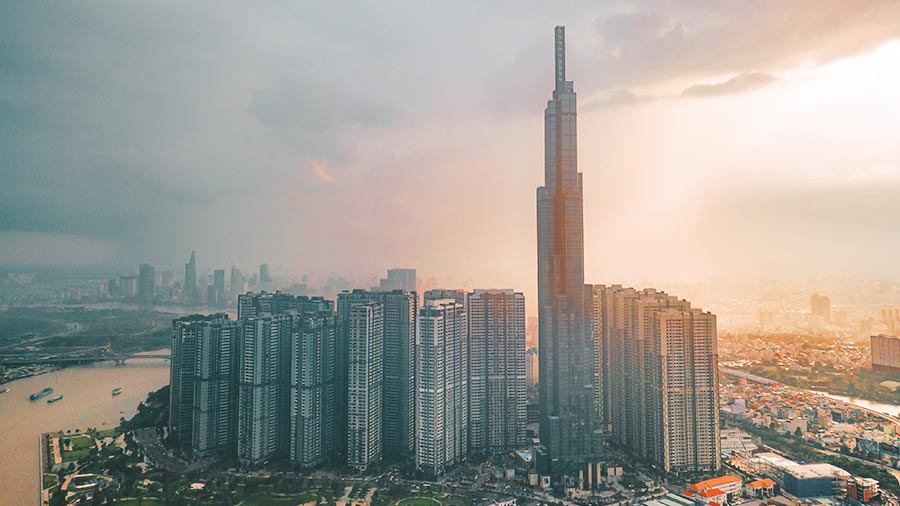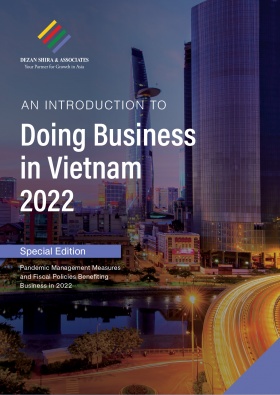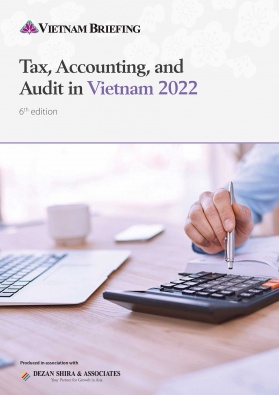Vietnam’s Luxury Car Market Heats Up with McLaren Joining the Fray
Vietnam’s luxury car market may be entering its renaissance. Sales are increasing and showrooms are popping-up in both Hanoi and Ho Chi Minh City selling high-end luxury vehicles that even the wealthiest Vietnamese, just a couple of decades ago, would have struggled to afford. Here’s the current state of play and what to expect moving forward.
In October of this year, McLaren opened its first showroom in Ho Chi Minh City (HCMC), joining the likes of Porsche and Lamborghini in hawking their luxury vehicles to the Southeast Asian nation’s burgeoning elites.
Its impact, however, was twofold: not only did it bring McLaren’s supercars that little bit closer to Vietnamese consumers, but it also underlined a significant change in Vietnam.
Whereas not long ago, the roads of this rapidly developing nation were almost exclusively the domain of motorcycles, in the past decade cars have become big business.
And, although motorcycles are still the dominant force, the transition from two-wheels to four is in full swing on the streets of Vietnam’s major cities.
This reworking of personal transportation is being driven by rising incomes, declining import tariffs as a result of a gamut of free trade agreements (FTAs), and the prestige that comes with owning a car–a prestige amplified by the vehicle’s make and model.
It’s these factors, together, that have converged to create a market for luxury cars the big brands are eager to exploit.
Vietnam’s luxury car market in numbers
According to the Vietnam Register, almost all major luxury car brands reported increases in sales in the first half of 2022 compared to the first half of 2021.
Mercedes was the bigger winner, selling 3,929 vehicles compared to 3,071 over the same period a year earlier. It is, notably, the only car company on the list that builds cars in Vietnam.
But similar jumps were also recorded for other major luxury car makers. Lexus sold 966 cars up from 742; Volvo sold 852 cars up from 469; BMW sold 661 cars, up from 520; Porsche sold 411, up from 175; and Audi sold 254, a small jump, but a jump nonetheless, from 235 in the first half of last year.
Positive public sentiment is boosting demand
Even without the luxury car sales data, however, Vietnam’s affinity for high-end automobiles is clear.
Hanoi, for example, was scheduled to hold the Formula One Grand Prix in April of 2020. It would have been the first time Vietnam had held the event.
Due to be sponsored by VinFast, Vietnam’s only current, homegrown automobile manufacturer, it was postponed due to the COVID-19 pandemic but then later canceled. There is no word yet as to whether it may happen in the future but that it was scheduled to be held at all illustrates Vietnam’s desire to be a part of the global motoring community.
Regardless, it did contribute to raising VinFast’s international profile.
This has further been accentuated, through the domestic and international press, with its automobiles featuring in the Paris and Los Angeles Motor Shows.
But more to the point, its ambitious plans to infiltrate the US electric car market have inspired Vietnamese consumers at home–In Vietnam, there is a palpable optimism and pride in this relatively nascent domestic car maker and this is boosting interest in the automotive industry more broadly.
Vietnam’s luxury car tax may be an obstacle
But luxury cars, in Vietnam, can be expensive.
In 2016, Vietnam put the brakes on its luxury car market, bumping up its luxury car tax, officially known as the special consumption tax (SCT).
On July 1, of that year the top tax rate for a luxury car went from 60 percent to 150 percent. A huge jump that, at least for Rolls-Royce, was followed by a drop in sales.
| Engine Size (liters) | Tax (%) |
| Less that 1.5 | 35 |
| 1.5 – 2 | 40 |
| 2-2.5 | 50 |
| 2.5-3 | 60 |
| 3-4 | 90 |
| 4-5 | 110 |
| 5-6 | 130 |
| 6+ | 150 |
Source: Vinfast
Whereas in 2016, a total of 24 Rolls-Royces were imported into Vietnam. Two years later, just seven of the super luxury cars arrived on the Southeast Asian nations’ shores.
Notably, correlation does not necessarily mean causation. That said, even if this did reflect a downturn in luxury car sales, it may have only been short lived with Rolls-Royce opening a new showroom in Ho Chi Minh City in 2021.
But the SCT has not been the only tax pushing up the price of Vietnam’s luxury automobiles.
Luxury cars imported into Vietnam are also subject to value added tax of 10 percent and import tariffs as high as 70 percent in some instances.
This, however, is changing.
Free trade agreements are reducing import costs
With the gamut of free trade agreements Vietnam has signed onto, import tariffs on cars may soon be a thing of the past. Almost all of Vietnam’s major FTAs have provisions for reducing import tariffs on cars.
The European Union-Vietnam Free Trade Agreement (EVFTA) will see all tariffs on vehicles imported from the European Union eliminated over the course of the next ten years.
Under the Comprehensive and Progressive Trans-Pacific Partnership Agreement (CPTPP) Vietnam will bring its import tariff on vehicles from participating nations to zero over 12 years.
And, as part of the Vietnam-UK Free Trade Agreement (UKVFTA), which inherited a lot of its infrastructure from the EVFTA, tariffs on automobiles imported from the UK into Vietnam will be mostly eliminated over 8-9 years.
These reductions, when fully implemented, should result in relatively big drops in purchase prices.
The future of Vietnam’s Luxury Car Market
Vietnam is a rapidly developing nation. Its GDP per capita has almost doubled over the last decade, from US$1,942 in 2011 to US$3,694 in 2021, according to the World Bank. Furthermore, this year alone, Vietnam’s economy is forecast to grow another 7 percent.
And it’s among all of this prosperity, that a community of ultra-high-net-worth individuals with an appetite for luxury goods, including high-end cars, is growing and seeking new ways to spend their new found wealth. A task the likes of which McLaren, Porsche, and Lamborghini are now on hand to assist with.
About Us
Vietnam Briefing is published by Asia Briefing, a subsidiary of Dezan Shira & Associates. We produce material for foreign investors throughout Eurasia, including ASEAN, China, India, Indonesia, Russia & the Silk Road. For editorial matters please contact us here and for a complimentary subscription to our products, please click here.
Dezan Shira & Associates provide business intelligence, due diligence, legal, tax and advisory services throughout the Vietnam and the Asian region. We maintain offices in Hanoi and Ho Chi Minh City, as well as throughout China, South-East Asia, India, and Russia. For assistance with investments into Vietnam please contact us at vietnam@dezshira.com or visit us at www.dezshira.com
- Previous Article Seven Years On: 4 Ways the Vietnam-Korea FTA is Changing Vietnam
- Next Article The Untapped Potential in Vietnam’s Pre-school Market

































